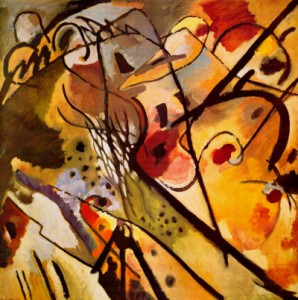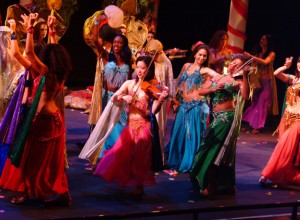
When I attended the University of Leiden Software-Development was in its infancy. In 1969 just a few people were programming for the simple reason that the amount of computers was very low. It took a lot of time (many weeks), intelligence and perseverance to create a small working software-program.
At that time the effect of a software-program on other people was very low. Software-programs were used by the programmers themselves to solve their own problems.
When User-Interfaces, Databases and Telecommunication appeared it became possible to create software for Many Non-Programmers, Users. The software-systems got bigger and programmers had to cooperate with other programmers.
When the step from One-to-Many was made in the process of software-development and exploitation, Software-Quality became on very important issue.
What is Software?
A Software-program is a sequence of sentences written in a computer-language. When you speak and write you use a natural language. When you write a computer program you use an artificial, designed, language.
The difference between natural and artificial languages is small. Esperanto is a constructed language that became a natural language. Perhaps all the natural languages were constructed in the past.
Software programs are very detailed prescriptions of something a computer has to do. The specifications of a software-program are written in a natural language (Pseudo-Code, Use-Case).
To create Software we have to transform Natural Language into Structured Language. The big problem is that Natural Language is a Rich Language. It not only contains Structural components but is also contains Emotional (Values), Imaginative ((Visual) Metaphors) and Sensual Components (Facts). The most expressive human language is Speech.
In this case the Tonality of the Voice and the Body Language also contains a lot of information about the Sender. When you want to create Software you have to remove the Emotional, Imaginative and Sensual components out of Human Language.
What is Quality?
According to the International Standards Organization (ISO), Quality is “the degree to which a set of inherent characteristics fulfills requirements“. According to the ISO the quality of a software-program is the degree in which the software-coding is in agreement with its specification.
Because a specification is written in natural language, Quality has to do with the precision of the transformation of one language (the natural) to another language (the constructed).
According to Six Sigma Quality is the number of defects of an implementation of the specification of the software.
Another view on Quality is called Fitness for Use. It is this case Quality is “what the Customer wants” or “What the Customer is willing to pay for“.
If you look carefully at all the Views on Quality, the Four World Views of Will McWhinney appear.
Six Sigma is the Sensory View on Quality (Facts), ISO is the Unity View on Software (Procedures, Laws, Rules) and Fitness for Use is the Social View on Quality (Stakeholders).
The last worldview of McWhinney, the Mythic, the View of the Artist, is represented by the Aesthetical view on Quality. Something is of high quality when it is Beautiful.
The Four Perspectives of McWhinney look at something we name “Quality”. We can specify the concept “Quality” by combining the Four definitions or we can try to find out what is behind “the Four Views on Quality”.
The Architect Christopher Alexander wrote many books about Quality. Interesting enough he named the “Quality” behind the Four Perspectives the “Quality without a Name“. Later in his life he defined this Quality, the “Force of Life“.
What Happened?
In the beginning of software-development the Artists, the Mythics, created software. Creating high quality software was a craft and a real challenge. To create, a programmer had to overcome a high resistance.
The “creative” programmers solved many problems and shared their solutions. Software-development changed from an Art into a Practice. The Many Different Practices were Standardized and United into one Method. The Method made it possible for many people to “learn the trade of programming”.
When an Art turns into a Method, the Aesthetic, the Quality that Has No Name, Life Itself, disappears. The Controller, Quality Management (ISO), has tried to solve this problem and has given many names to the Quality without a Name. Many Aspects of Software Quality are now standardized and programmed into software.
But…
It is impossible to Program the Social Emotions and the Mythic Imagination.
So…………
Software developers don’t use Methods and Standards because deep within they are Artists. The big difference is that they don’t solve their own problems anymore. They solve the problems of the users that are interviewed by the designers.
And…..
The Users don’t want the Designers to tell the Programmers to create something they want to create themselves (the Not-Invented Here Syndrome). They also don’t know what the programmers, instructed by the designers will create, so they wait until the programmers are finished and tell them that they want something else.
What Went Wrong?
The first Computer, the Analytical Engine of Charles Babbage, contained four parts called the Mill (the Central Processing Unit, the Operating System), the Store (the database), the Reader, and the Printer. The Analytical Engine and his successors were based on the Concept of the Factory.
In a Factory the Users, the Workers, The Slaves, have to do what the Masters, the Programmers, tell them to do.The Scientists modeled successful programmers but they forgot to model one thing, the Context. At the time the old fashioned programming artists were active, software was made to support the programmer himself. The programmer was the User of his Own software-program.
At this moment the Factory is an “old-fashioned” concept. In the Fifties the Slaves started to transform into Individuals but the Factory-Computer and the Practices of the Old Fashioned Programmers were not abandoned.
To cope with the rising power of the Individual the old methods were adopted but the old paradigm of the Slave was not removed. The Slave became a Stakeholder but his main role is to act Emotionally. He has the power to “Like or to Dislike” or “To Buy or not to Buy”.
The big Mistake was to believe that it is possible to program Individuals.
What To Do?
The Four Worldviews of Quality Move Around Life Itself.
According to Mikhail Bakhtin Life Itself is destroyed by the Process of Coding (“A code is a deliberately established, killed context“).
When you want to make software you have to keep Life Alive.
The Paradigm-Shift you have to make is not very difficult. Individual Programmers want to make Software for Themselves so Individual Users want to Do the Same!
At this moment the Computer is not a tool to manage a factory anymore. It has become a Personal tool.
It is not very difficult to give individuals that Play the Role of Employee tools to Solve their own Problems.
When they have solved their own problems they will Share the Solutions with other users.
If this happens their activities will change from an Individual Act of Creation into a Shared Practice.
If People Share their Problems and Solutions, their Joy and their Sorrow, they Experience the Spirit, the Force of Life, the Quality that has no Name.
LINKS
About the Worldviews of Will McWhinney
About Model Driven Software Development
About the Illusion of Cooperation
About the Analytic Engine of Charles Babbage



